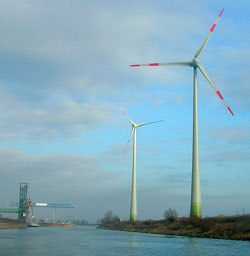Magdeburg/Sülzetal, Germany:
An Editorial Profile
An Editorial Profile
European
Crossroads |
 |
| The Magdeburg region in eastern Germany's Saxony- Anhalt federal state is largely behind the shifting of industrial transport corridors east. European Union investment in the region is expediting the process. |
 |
 |
|
E
|
ven as the European Union expands to include more Central and Eastern European states, investors in capital projects face daunting challenges when evaluating specific locations. A German location, for example, means choosing between a western location and an eastern one; the difference in average wages between the two is about 30 percent, to eastern locations' advantage. But is the appropriate labor force in place there, or have workers migrated to the higher- paying west? Can the east's infrastructure support new industrial development? Are eastern German locations in any way superior to those of nearby countries, such as the Czech Republic or Poland? Moreover, how has German reunification, now nearly 17 years old, helped the former German Democratic Republic emerge as a logical location for industrial investment?
The answers to these and many related questions can be found in and around Magdeburg, the capital of the federal state of Saxony- Anhalt. Out from under the constraints of the Soviet occupation and its socialist politics, city and regional elders are positioning the area as a logistics and industrial gateway to central and eastern Europe and beyond. They maintain that western German cities on the Rhine – Essen, Cologne, Bonn and Weisbaden – are increasingly congested and decreasingly attractive as centers of logistics and distribution activity for industry.
The alternative, they assert, is to bring goods into and out of eastern Germany via the northern German port of Hamburg on the River Elbe. The river is navigable by container barge as far south as Magdeburg and its large port (see page 4), where goods can be transferred to canals for shipment into Poland and the east. By truck, goods are easily transported north- south and east- west on two autobahn routes. Air service, including cargo, is accessible at airports in Berlin and Leipzig – DHL operates a regional hub at the latter – among other cities.

